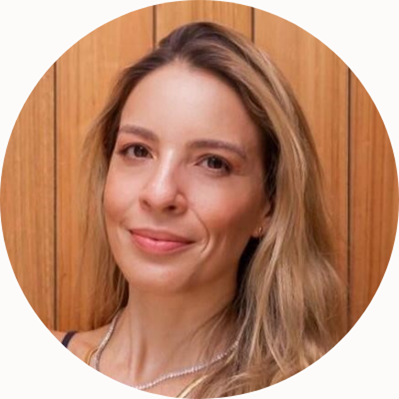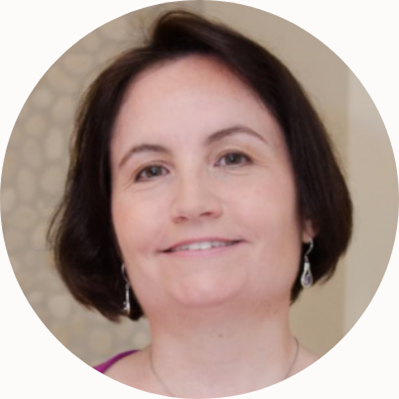8 female inventors on closing the gender gap in innovation
March 28, 2022 | By Grace Devlin
How do you know when an idea is an invention? Thinking of new products or identifying novel solutions is a creative, exploratory process, and inventing something new doesn’t necessarily come with a lightbulb moment.
“In my experience, many inventors think they only have an idea and are not yet at the invention stage when, in fact, they really do have an invention that could be protected,” says Sunitha Miryala, a Singapore-based product development manager at Mastercard who has contributed to several patents in the field of cyber and intelligence.
Other times, however, the realization can be as quick as the half-second return of search engine results. Ke Zhou, a senior product manager in Operations & Technology in Shanghai, knew that she could submit her augmented reality customer profiling system to be patented “when I couldn’t find a result that directly solved my problem on Google.”
Female inventors such as Miryala and Zhou — both of whom worked on patents protecting their innovations at Mastercard — are helping narrow the gender gap in science, technology, engineering and math careers. But STEM fields remain dominated by men, and only 16.5% of inventors named in more than 3.2 million international patent applications in 2020 were women, according to the World Intellectual Property Organization.
“Diverse thinking can help us rethink what’s possible and create technology that brings more opportunities for everyone,” says Adeline Fleming, senior managing counsel of intellectual property at Mastercard. “Having a robust patent process is a critical component of identifying these innovative ideas and protecting a company’s intellectual property.”
Whether it’s right away or further into the creative process, once it’s clear that an inventor has an innovation, the next step is to protect their intellectual property by applying for a patent. At major corporations, such as Mastercard, where inventors solve problems on a global scale and in a crowded market, securing patents is essential for staying competitive and innovating efficiently.
Omokehinde Adebanjo, a Dubai-based senior vice president of Franchise at Mastercard, has worked on teams to create patents for cardless cash withdrawals and e-commerce cash payments. She felt the gender gap personally as the only woman to work on both the teams for these patents, but sees the potential for progress in long-term and short-term solutions.
Programs like Mastercard’s Girls4Tech address the systemic gender gap by getting more girls involved in STEM from an early age, Adebanjo says. She adds that in everyday situations, encouragement is necessary and can make a difference. “That nagging idea could possibly be a unique invention, and that uniqueness is definitely worth protecting.”
Prina Patel, a data scientist at Mastercard who recently worked on a patent application to better understand money laundering, agrees that early STEM learning for young women is key. But it’s also necessary, she says, to educate everyone on “unconscious bias, gender pay gaps and other societal barriers that exist that either stop or impede women from realizing their full potential.” Beyond education, actively hiring diverse individuals is critical across the tech industry, she says.
As Women’s History Month continues, the Mastercard Newsroom spoke with other female inventors across the company and globe about what could help support women in technology and encourage their innovation. Here’s what they say:
Debasmita Das, manager, AI Garage, Cyber & Intelligence Gurugram, India
 “Events like hackathons help people open up their minds and think in an innovative way. Regular interactions with women leaders will also keep the women technologists motivated — they will get role models to look up to and try to put in their extra best to develop their own thinking and not fear to keep and stand by their own innovations and ideas.”
“Events like hackathons help people open up their minds and think in an innovative way. Regular interactions with women leaders will also keep the women technologists motivated — they will get role models to look up to and try to put in their extra best to develop their own thinking and not fear to keep and stand by their own innovations and ideas.”
Lisiane Pereira, vice president, Data Strategy, Data & Services, São Paulo
 “Let’s encourage women and put them together. Let´s encourage women from different regions, cultures, skills to talk about their ideas to each other and support them in a process to design and elaborate the ideas to go to a patent process.”
“Let’s encourage women and put them together. Let´s encourage women from different regions, cultures, skills to talk about their ideas to each other and support them in a process to design and elaborate the ideas to go to a patent process.”
Claire Le Gal, senior vice president, Fraud Intelligence and Strategy, Cyber & Intelligence, Purchase, N.Y.
 “Encourage women to speak more. Women tend to stay quiet when they don’t think they are the expert around the table. I continuously encourage women on my team and those I mentor to have confidence in themselves. They are at the table for a reason (not to bring coffee or take notes), have confidence in that and their ability. Even if they are not the expert, their questions or comments can lead to breakthrough solutions!”
“Encourage women to speak more. Women tend to stay quiet when they don’t think they are the expert around the table. I continuously encourage women on my team and those I mentor to have confidence in themselves. They are at the table for a reason (not to bring coffee or take notes), have confidence in that and their ability. Even if they are not the expert, their questions or comments can lead to breakthrough solutions!”
Ellen Moskowitz, director, Biometric Innovations, Cyber & Intelligence, Purchase, N.Y.
 “I would hope that more women give themselves time to think about unique product extensions, enhancements and creative support mechanisms to take to our patent team for review. It only needs to be a paragraph or two to start the process.”
“I would hope that more women give themselves time to think about unique product extensions, enhancements and creative support mechanisms to take to our patent team for review. It only needs to be a paragraph or two to start the process.”